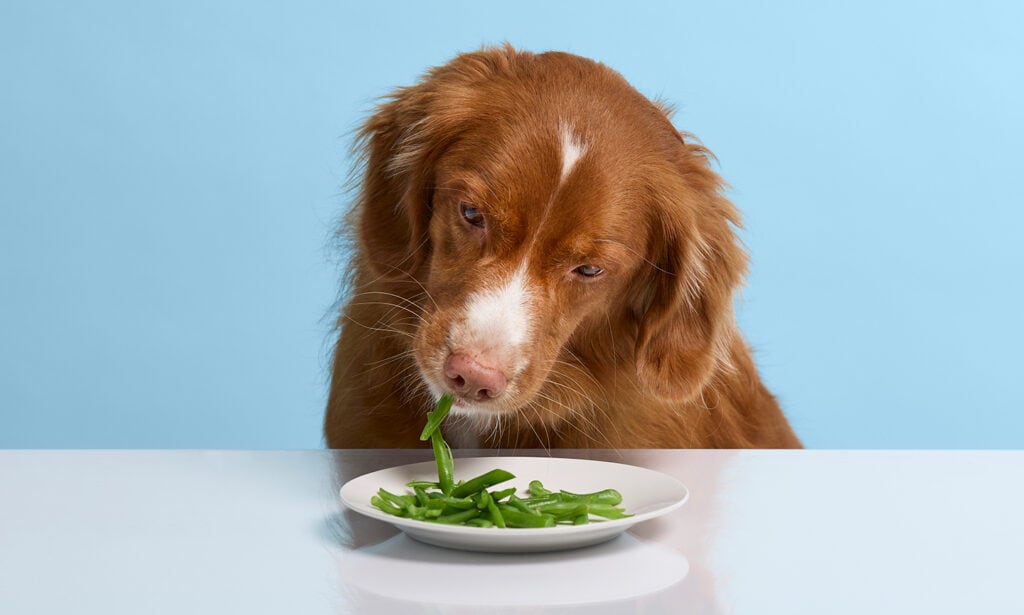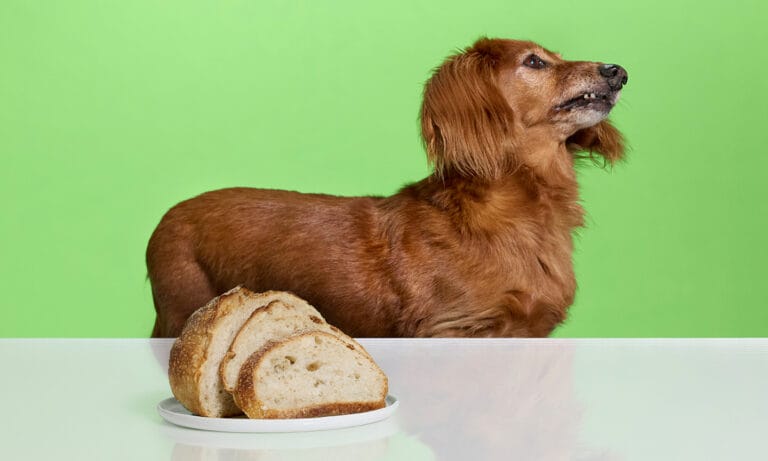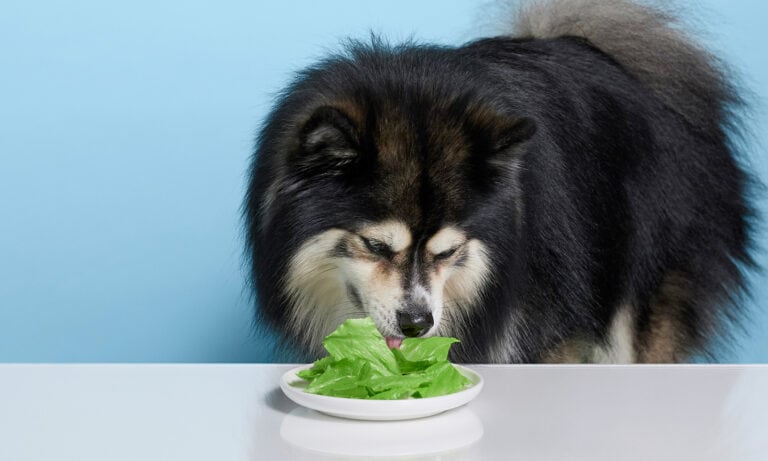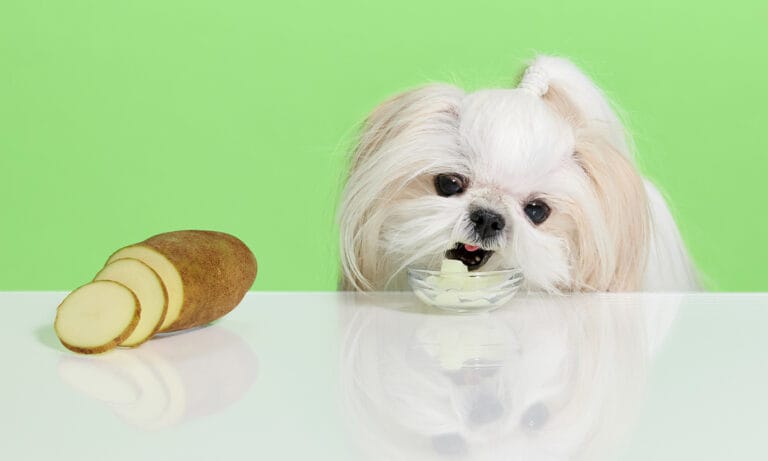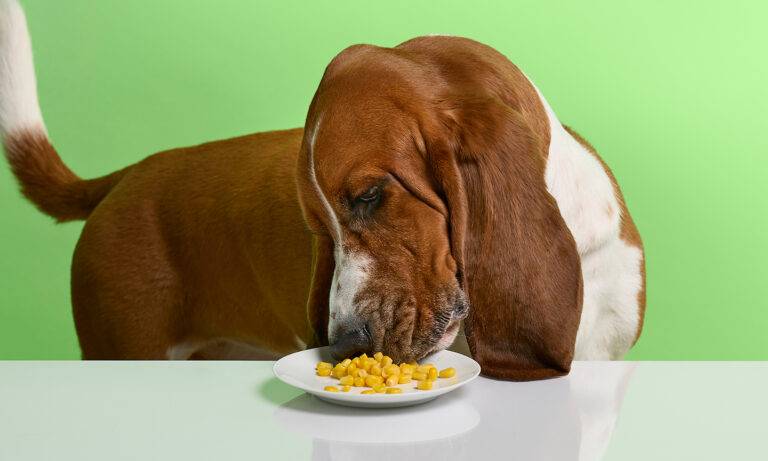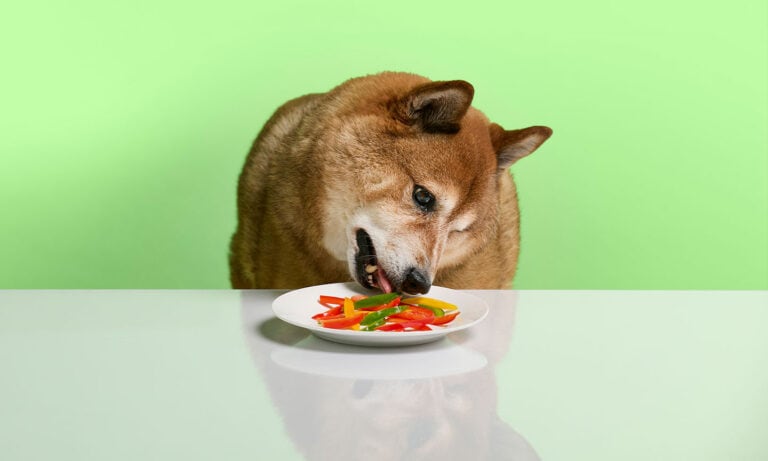String beans—a.k.a. green beans—may not make your dog come running in the same way that the unmistakable scent of bacon does. But if you’ve ever noticed your pup trying to get a nibble of your vegetables, you may be wondering, "Can dogs eat string beans?"
The short answer is "yes," and green beans are even considered a healthy treat that can contribute to your dog’s well-being. But, as with any human food, there are some things you’ll want to keep in mind before giving in.
We spoke to a vet expert to discuss the potential benefits (and risks!) of giving your dog string beans—and the best ways to feed these veggies to your furry friend.
Can Dogs Eat String Beans?
Click to jump to each section.
How Many Green Beans Can My Dog Have?
The answer to this question depends on the size of your dog and how well they tolerate the green beans.
- Smaller dogs can have 1-2 green beans per day.
- Larger dogs can have 3-5 green beans per day.
You can give your dog green beans daily, if you want, but just make sure you’re adding them as a supplement to a balanced diet and not completely replacing their regular food. This is because treats should consist of no more than 10 percent of your dog’s nutritional intake.
If you notice any adverse reactions, such as stomach troubles or diarrhea, scale back on the amount of green beans you’re giving your dog to allow them a chance to adjust. If your dog doesn’t adapt well to green beans, don’t push it—there are other veggie-based, low-calorie treats, such as cabbage, which offer similar health benefits.
4 Ways To Feed Green Beans to Dogs
Dogs aren’t known for being the pickiest eaters. If you’re serving them human foods, they’ll pretty much take what they can get. But when it comes to feeding them vegetables, you may have to get a little more creative than you would if you were giving them, say, a piece of steak.
Unlike other vegetables, there’s some degree of flexibility in how you can serve green beans, says Dr. Kong.
Your dog can eat them raw or cooked. However, if you do serve them cooked, steamed, plain green beans without any added salts or seasonings are best.
Here are four ways you can feed green beans to your dog.
1Serve Them Straight Up
If your dog is a veggie lover, they will likely enjoy raw green beans as a treat. This nutritious, low-calorie snack is a great option for all dogs, but it’s an especially good one for overweight dogs who need to cut back on regular treats.
2Use as a Food Topper
The easiest way to serve green beans is to steam them (without adding any oils or spices), chop them up and then sprinkle them onto your dog’s food.
If your dog isn’t a fan of the extra veggies, mince them (cutting them into very small, finely chopped pieces) and stir them into kibble or wet food so they’re barely detectable.
3Dehydrate Them
Many dogs love dehydrated treats, and you can make your own at home.
If you have a food dehydrator, simply place a layer of green beans on the tray and let the dehydrator do its thing.
If you don’t have a food dehydrator, you can also dehydrate green beans in the oven. Here’s how:
- Preheat the oven to 125°F.
- Wash the green beans and remove the ends by snapping them or using a kitchen knife.
- Cut the beans in half or chop them into 1-inch pieces.
- Bring a large pot of water with a pinch of salt to a boil.
- Fill a mixing bowl with ice and cold water.
- When the water starts to boil, add the green bean pieces and boil for three minutes or until the beans turn bright green but are still crispy.
- Remove the beans from the water with a slotted spoon and place them directly into the ice bath. Let them sit for one minute.
- Drain the beans and pat them dry with paper towels.
- Arrange the blanched green beans in a single layer on a baking sheet and bake for eight to 12 hours or until they are completely dry.
- Remove them from the oven and let them cool completely.
- Store them in an airtight container for up to a year and serve as desired.
4Make a Frozen Treat
Many dogs love frozen treats, or "pupsicles," and you can make a healthy version with green beans. Here’s how:
- Wash the green beans and trim the ends by snapping them or using a kitchen knife.
- Cut the beans into thirds or chop them into 1-inch pieces.
- Lay them out in a single layer on a baking sheet and freeze for one hour.
- Transfer to a freezer-safe bag or container and store them in the freezer for up to three months.
You can offer frozen green beans to your dog on hot days or whenever you’d like to slow down their eating process a bit.
Benefits of Green Beans for Dogs
Green beans aren’t just safe for dogs; they have nutritional value, too. Here are some of the main health benefits of green beans.
- They’re low in calories: Green beans are a fantastic low-calorie, healthy snack, according to Dr. Kong. If your pup is overweight, green beans are a great option for giving them a treat without adding to their daily caloric intake too much. Even if your dog isn’t overweight, green beans can be a great alternative to dog biscuits—you can switch off between the two to help cut back on calories.
- They’re rich in vitamins and minerals: Green beans are a good source of vitamins, including vitamin C and vitamin K, Dr. Kong says. Vitamin C can help bolster your dog’s immune system, while vitamin K plays a pivotal role in maintaining bone health. They’re also rich in vitamin A, which supports healthy vision. Additionally, they contain essential minerals such as calcium, magnesium, potassium and manganese, all of which contribute to your dog’s metabolic function.
- They’re a good source of fiber: The dietary fiber in green beans can help your pup maintain a healthy gut, promoting good digestion and preventing or alleviating constipation.
- They contain antioxidants: Green beans offer antioxidants and beneficial plant compounds that fight free radicals, protecting your dog’s overall health.
Risks of Green Beans to Dogs
It’s generally safe to give green beans to your pup, as long as you’re mindful of how you serve them. Dr. Kong stresses that moderation is key, and you want to gradually introduce them and observe your dog for any adverse reactions.
As mentioned above, you also want to make sure they’re unseasoned and properly prepped. If you do that, the likelihood is high that your dog will tolerate them well.
However, as with introducing any new food into your dog’s diet, there is a possibility that they mayl experience some side effects or adverse reactions.
Here are the primary risks associated with feeding green beans to dogs:
- They might cause digestive upset: Digestive upset, such as gas, bloating and flatulence, are the most likely side effects of adding green beans to your pup’s diet. You can reduce this risk by introducing green beans gradually (a few bite-size pieces at a time over several days). Even once your dog has adjusted, you’ll want to keep daily portions small.
- They can trigger allergies: Allergies are another possible concern. If you’ve never given your dog green beans before, there’s a chance they might have an allergic reaction to this new food. Allergic reactions commonly manifest as itching, hives, redness and/or swelling. These symptoms are not a normal reaction to green beans, so if you notice any of these signs, contact your veterinarian and stop feeding green beans to your dog.
- They present a choking hazard: Whole or unprepped green beans can pose a choking risk to your dog. Make sure you always prep the green beans by snapping off the stem and removing any attached fibrous strings. Then, chop the green beans into small pieces that your dog can easily chew.
In addition, dogs with specific, underlying health issues may not tolerate green beans as well as healthy dogs. If your dog has a diagnosed health problem, check with your vet before giving them any new food.
FAQs About Green Beans and Dogs
Q:
Do green beans help soothe a dog’s stomach?
Q:
Can I feed my dog green beans every day?
Q:
What is the "green bean diet" for dogs?
Q:
Can dogs eat green bean casserole?
More human foods dogs can eat:
Share:
